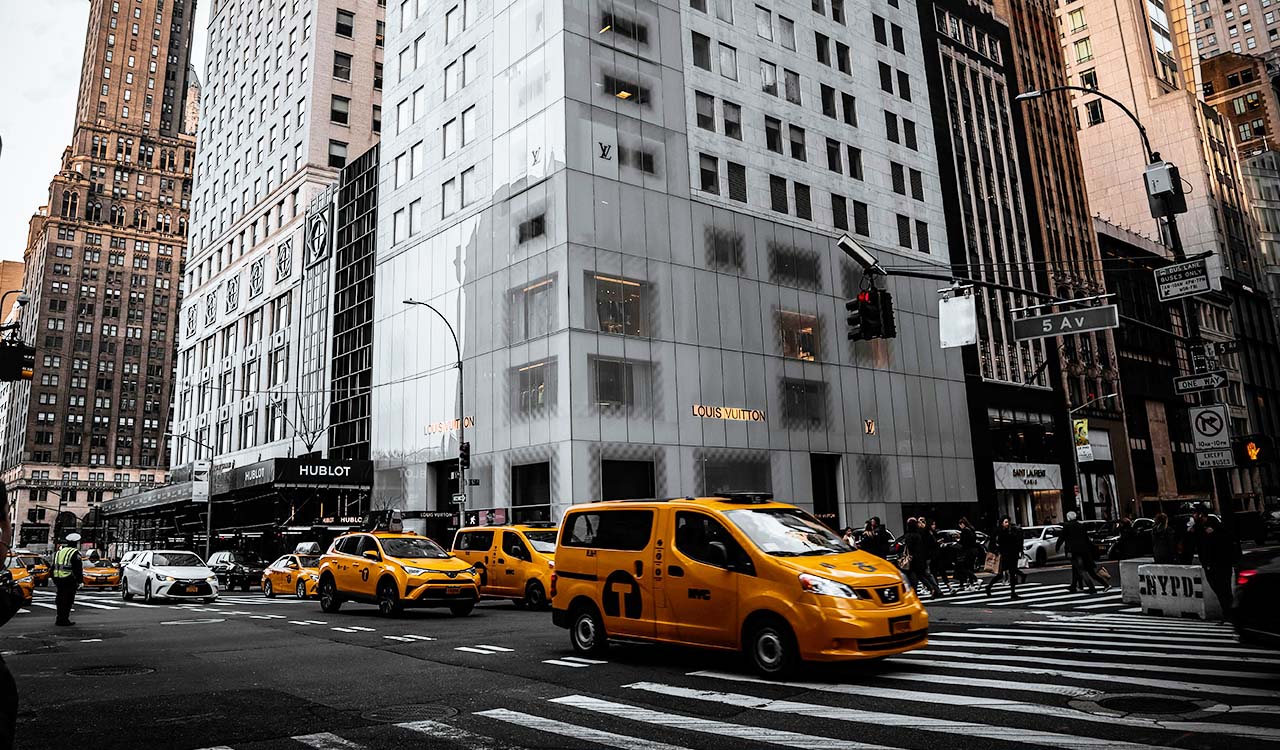Manhattan’s Fifth Avenue, long seen as synonymous with luxury shopping, is undergoing a transformation that parallels the current evolution in the luxe fashion market. This stretch of asphalt and cement lined with never-ending storefronts is home to iconic department stores and flagships of retail giants such as Tiffany & Co., Bergdorf Goodman, Louis Vuitton, Prada and Gucci. Fifth Avenue addresses function not only as revenue generators but also as billboards of brand prestige to the world and the many international tourists visiting New York. However, the Avenue, which was once the pinnacle of luxury retail, has transformed in recent years mirroring broader shifts by displacing many of the venerable brands. The same trend is apparent on Oxford Street in London. What’s to become of Fifth Avenue’s retail transformation?
The 11-block stretch known as Luxury Row between 60th and 49th Streets has evolved from pure luxury to more aspirational brands. The closure of landmark stores such as Henri Bendel, Barneys New York, and Lord & Taylor has given way to discount shops like Five Below and mainstream fast fashion players such as Zara and H&M.
Ubiquitous Consumerism
The 11-block stretch known as Luxury Row between 60th and 49th Streets has evolved from pure luxury to more aspirational brands. Closure of landmark stores such as Henri Bendel, Barneys New York, and Lord & Taylor has given way to discount shops like Five Below and mainstream fast fashion players such as Zara and H&M. The pandemic accelerated these changes, leaving vacant storefronts and the downward slide of the exclusivity which once defined the street. Meanwhile, the entire luxury sector is facing an unprecedented downturn, revealing a bifurcated industry where high-end and discount retailers battle each other for relevance.
In response to Fifth Avenue’s new face, New York City officials have proposed a $350 million plan to revamp a 20-block stretch of Fifth Avenue, aiming to reverse this trend and restore the area to its former glory. The plan, coined by Mayor Eric Adams as “Future of Fifth”, includes wider sidewalks, new seating areas, and greenery to create a pedestrian-friendly space akin to Paris’ Champs-Élysées or London’s Bond Street. The proposal seeks to entice luxury brands to return while appealing to a broader mix of visitors and locals. Despite retail sales returning to normal in most areas of NYC, spending in midtown is down 9 percent with foot traffic down 23 percent last year. Part of the argument contends that the “Open Streets Initiative” drives spending. Yet, the transformation must contend with a more profound challenge: a luxury market grappling with a downturn, its image problem, and evolving customer preferences backed by a rising new generation of pragmatic consumers.
Luxury Market Struggles
The financial woes in the luxury sector have become impossible to ignore. Recent earnings reports from industry leader LVMH paint a bleak picture. The conglomerate, which owns Louis Vuitton and Dior, reported a 5 percent decline in sales for its fashion and leather goods division, with total group revenue falling 3 percent in the third quarter of 2024. The slowdown is particularly bad in Asia, where demand plummeted 16 percent, and even the U.S. market, historically a stronghold, was flat.
A combination of factors has driven the downturn, including economic headwinds, high prices, and changing consumer preferences. This shift even impacts the middle, leading mass and fast-fashion brands to reposition themselves. Meanwhile, luxury labels are launching concept stores with experiential retail to engage with customers. These financial struggles are not confined to high-end brands and indicate a larger shift within the fashion landscape. There is a ripple effect throughout the industry, exposing a deeper division that is reshaping the very definition of luxury.
A Metaphor for the Fashion Industry’s Bifurcation
Fifth Avenue’s transformation from an exclusive luxury destination to a hodgepodge blend of retail reflects a broader bifurcation within the fashion industry. On one side, high-end brands struggle to maintain exclusivity and relevance amid rising costs and shifting consumer values. On the other hand, discount retailers, fueled by the explosive growth of digital-first platforms like SHEIN and TEMU, are thriving by offering budget-conscious shoppers trendy, affordable options. These platforms have exploited trade loopholes, such as the U.S. de minimis trade exemption law, allowing them to import goods at low costs without paying customs duties, further intensifying the competition.
The result is a polarized market where the middle ground has all but disappeared; brands are either moving upmarket to maintain a sense of exclusivity or doubling down on affordability to compete with digital-first platforms in a “if you can’t beat them, join them” approach. Shoppers seek ultra-luxury experiences or the cheapest deals, leaving little room for upwardly mobile brands that once catered to the “aspirational” customer.
The retail landscape on Fifth Avenue reflects this shift: it is no longer dominated solely by ultra-luxury giants mirroring the broader trend of democratization in fashion including Victoria’s Secret, Abercrombie & Fitch, Uniqlo, Nike, Aritzia and Adidas.
A driving force behind the changing retail landscape is the evolving preferences of younger consumers, particularly Gen Z, who are increasingly making this swap. This generation tends to value travel, dining, and unique social experiences until they have the means to acquire luxury items. The trend has forced brands to innovate, leading to the rise of experiential retail spaces beyond traditional shopping. To cater to a growing preference for immersive experiences, luxury brands are now offering concept stores featuring unique elements like cafes, art installations, and event spaces.
The proposed revitalization of Fifth Avenue aligns with this shift, incorporating pedestrian-friendly spaces and cultural attractions to create a more experiential environment. Just as younger consumers seek experiences that offer personal fulfillment and social currency, the revamped Fifth Avenue aims to provide a space where people can shop, enjoy the city’s cultural offerings and sit down to recover from it all.
Opportunities in a Downturn
While the luxury market struggles, there are signs of hope and opportunity. The redevelopment of Rockefeller Center offers a potential blueprint for Fifth Avenue’s revival. By curating a mix of high-end boutiques, Michelin-starred restaurants, and cultural attractions, Rockefeller Center has begun to shed its image as a mere tourist trap and reestablish itself as a destination for locals and discerning visitors. The strategy prioritizes experiential retail and authenticity, appealing to a consumer base that craves unique, memorable experiences over standardized luxury.
For Fifth Avenue, a similar approach could help bridge the gap between its storied past and its future. By integrating more niche brands, pop-up shops, and cultural installations alongside flagship luxury stores, the Avenue can offer a dynamic shopping experience that resonates with high-end, tourists and more aspirational consumers.
The Future of Fifth Avenue
As Fifth Avenue prepares for its transformation, the world will be watching to see whether New York City’s most famous shopping street can recapture its former glory. The $350 million plan is ambitious, aiming to create a grand boulevard that appeals to tourists, locals, and luxury shoppers alike. However, the true challenge lies in reshaping the physical landscape and addressing the more profound economic and cultural shifts affecting the luxury market.
The Avenue’s evolution is a poignant metaphor for the fashion industry’s ongoing struggle to navigate a world where the lines between luxury and mainstream are increasingly blurred. What was once a boulevard of exclusive boutiques is now facing a new chapter of adaptation, resilience, and reinvention. Whether it’s through creative retail strategies, a renewed focus on craftsmanship, or innovative partnerships, the path forward will require a delicate balance between tradition and reinvention. Fifth Avenue may again symbolize the height of fashion in appearance and experience if successful.





